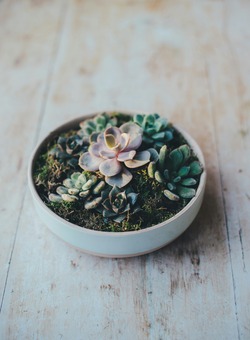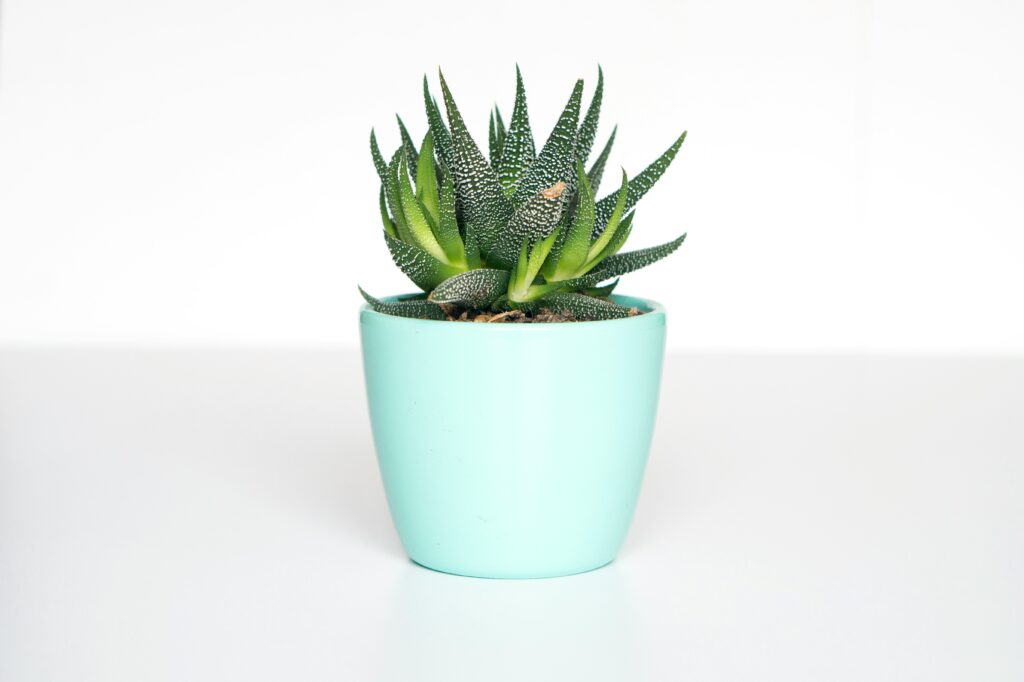Yes, we understand you are worried about your indoor succulent. Every time you plant a succulent it dries out and dies eventually. We care about your worries. You are at the right place to solve your problem. In this blog, we provide you with best care for succulents.
What are Succulent Plants?
Succulents are a variety of plants known for their thick and fleshy tissues that store water. They come in different sizes and shapes and their ability to retain water makes them good indoor gardening plants. These are plants like aloe, cactus, and jade plants.
Succulents need good care and maintenance if you are new you might ruin your succulents because of bad care. We are here to provide the best caring tips for succulents.
Choose the Right Succulent

Generally, there are multiple varieties of succulents available in the market. Do all the succulents perform best indoors? No, some Succulents need more light than the others. Succulents that prefer low Light and love shades are perfect for indoor gardening.
Succulents that have bright colors don’t do well indoors. We prefer succulents like the Jade plant, snake plant, and Zebra Haworthia.
Provide Enough Light
Succulent love to thrive in enough light. Generally, indoor succulents need 5-6 hours of light. Succulent can be tarnished in hot light. Make sure that it gets enough light required for its growth. Most Succulents prefer filtered light. So place them near the window where they can get filtered sunny light.
Rotate frequently
Succulents prefer to grow towards the light source. If you place them permanently in one place uneven growth will be observed. To ensure that it looks good you will need to rotate the succulent after every 4-5 days.
In this way, the succulents will grow properly, and even growth will be observed that will suit your lifestyle.
Watering
Succulents could retain water. They perform well in arid conditions because they have adapted thick and large tissue to retain water.
Succulents only need water when the soil is completely dry. You can dip in the soil using a stick if the soil has moisture then don’t water it and if the soil is dry then water it.
Remember, the most frequent cause of succulents’ death is more moisture than required.
Succulents need more water in the active season ( summer and spring) while in their dormant state, they don’t need water too much. Also, succulents love room-temperature water because cold water can sometimes damage the root.
Succulents like the “soak and dry” method. They love to soak their roots and then dry it quickly. More water can be harmful to succulents.
Choosing the right pot
Succulents need breathable pots with good drainage systems. Plants, to grow, need space that fits comfortably to their size. Succulents do not need much water so they will need a good water drainage system.
Pots having holes beneath are preferable because they drain extra water. Terracotta is ideal because it absorbs extra moisture and regulates air. Avoid any closed container or pot that does not drain frequently.

Soil Fertilization
Plants, whether outdoor or indoor, need proper soil to row. Compared to outdoor plants, indoor plants need more care and maintenance. To grow properly Succulents will need proper nutritious soil and checking for the following:
- Check your soil before implanting any plant. Test your soil, if it needs fertilizers.
- Mix fertilizer with soil and then plant succulents.
- Moreover, Succulent needs soil that drains swiftly. Generally, such soil is porous and sandy.
Optimum Temperature
Every plant needs a normal temperature to continue its normal and good health. Make sure that the light is filtered. Usually, Succulents tolerate high and filtered light meaning high-temperature but not too much.
If you observe your plant is wilting then it needs water and low temperature. Moreover, if you observe the widening of leaves or the gap between leaves your succulent needs sunlight.
Make sure that the temperature is between 60 and 80F.
Pruning and Grooming

Indoor planting constantly needs care and maintenance. Inside your office or home indoor planting represents your lifestyle. Trimming and proper supervision of indoor planting are necessary.
Succulents also need to be supervised. Remove any dead leaves to prevent pests and diseases. Trim any uneven growth to ensure adequate growth. Succulents usually grow toward the light, make sure that you cut the extra parts and replant the cutting and ensure new growth.
Use Pesticides and Insecticides
Plants get diseases and infections due to different pests and insects. pests infect the leaves and branches and insects eat the leaves therefore halting the succulent growth.
Outdoor plants are prone to diseases, however, indoor plants are less inclined to be infected by pests and insects.
It does not mean that your Succulent can not be infected by pests. Make sure that you use pesticides regularly and check out for insects because they can prove dangerous. Use insecticides to prevent any insects from infecting the plant. Bugs can be dangerous, spraying them in the larva stage will get rid of bugs.
Propagation
Succulents can be propagated to produce new plants. Leaves can be used to reproduce new plants. You need to gently twist the leaves, cut them, and let them dry, then place them on moist soil until new roots appear on the leaves and then bury them.
It can be propagated by stem. Cut the stem and let it dry. After the callus is formed, bury it. Some succulents also produce pups. Pups can be used to replant in a different place. Preparation is cost-effective.

FAQs
Do succulents need darkness?
Most Succulents are high-light succulents. They love to be in the sunshine but not always. You will need to provide filtered sunlight for six to seven hours daily. Some succulents love shades but they also need light for proper growth.
Where is the best place to put succulents indoors?
You can place Succulent anywhere in the home but then you will need to rotate it constantly. However, it is better to place it permanently under a filtered light where succulent will prevail and ensure growth.
How do I know if my succulent is doing well?
Indoor plants work well under adequate circumstances. If your plant is vibrant, has firm leaves, and has slow growth then your succulent is performing well.
Do succulents purify air?
Succulents provide a pleasing solution, with their unique ability to purify air. That makes them eco-friendly and improves indoor air quality.
How to fertilize succulents?
Succulent are very easy to fertilize. You just need some water solution having a fertilized mix in it. You will just need to pour it on the soil. And the soil is ready to plant.
Final thoughts
There are a variety of indoor plants to garden inside. Succulents are most popular to grow inside. However, it needs good care to maintain its healthy growth. Choosing the right succulent, adequate light, water, temperature, and rotation of the succulent proves helpful in maintaining its growth.
